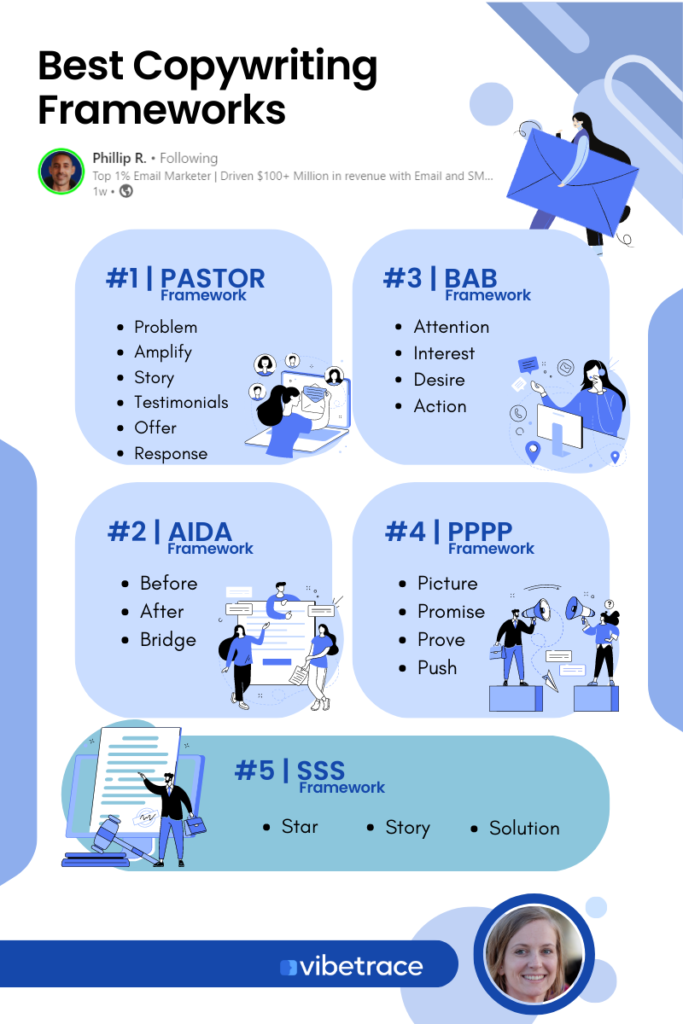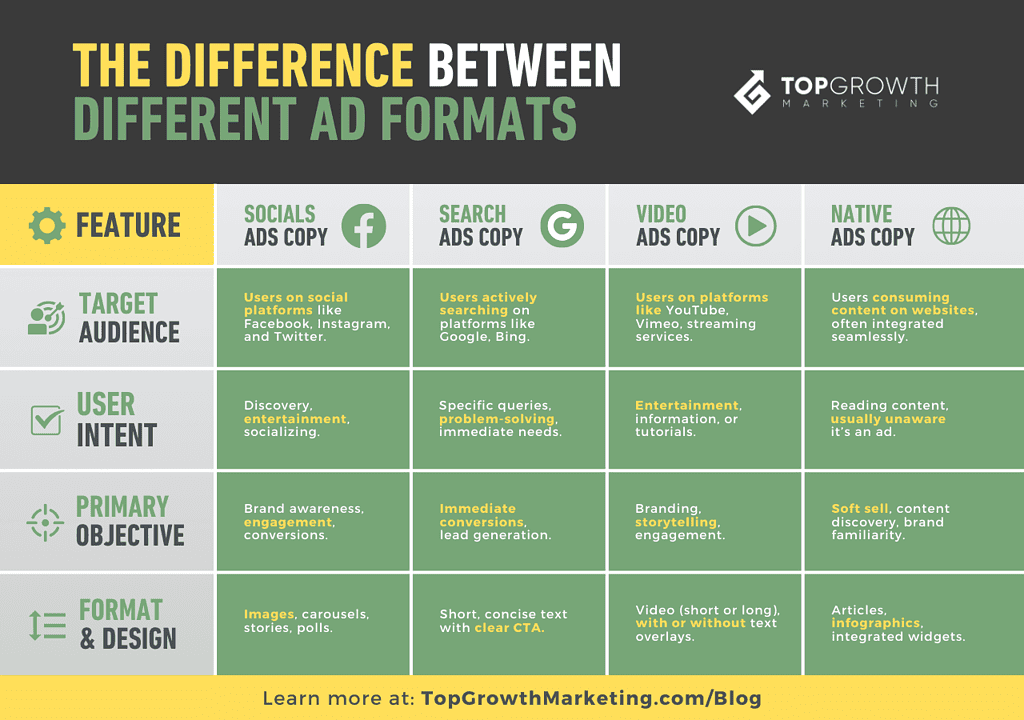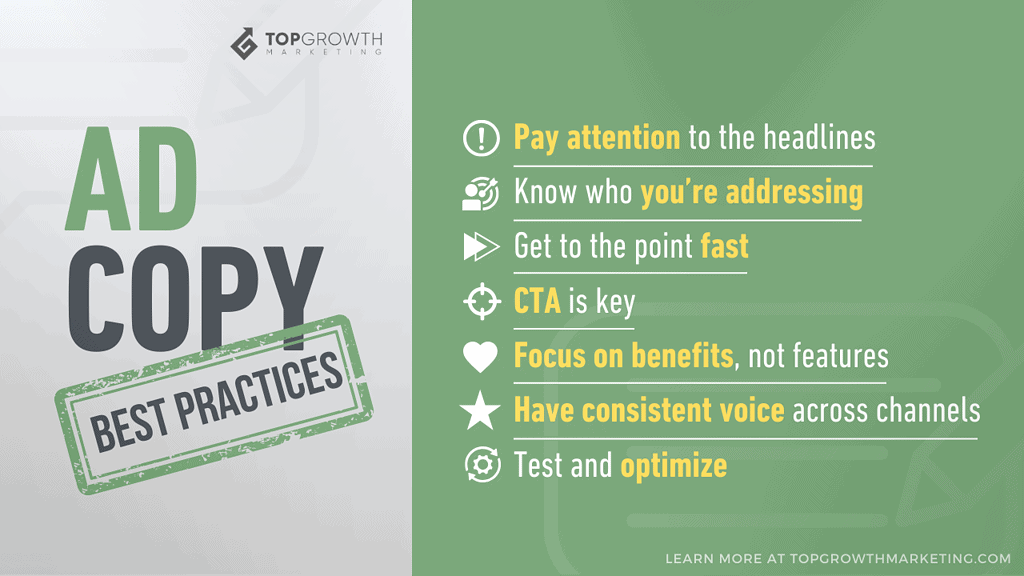Learn the secrets to writing persuasive ad copy that will captivate your audience and increase your conversion rates today!

Image courtesy of via DALL-E 3
Table of Contents
Introduction to Ad Copy
Ad Copy is something you see every day without even realizing it. Have you ever noticed the words that pop up on your computer screen, phone, or in a magazine trying to get you to buy something? Those are examples of ad copy! Let’s dive into what ad copy is all about.
What is Ad Copy?
Ad copy is like a special kind of writing that companies use to persuade people to buy their products or services. It’s the words they carefully pick and put together to make you interested in what they are selling. So, the next time you see a catchy sentence or phrase trying to get you to click or buy something, that’s ad copy at work!
Why is Ad Copy Important?
Imagine if companies didn’t use ad copy. How would they let people know about the amazing things they have to offer? Ad copy is like a superhero that helps companies catch your attention, tell you why their product is awesome, and convince you that you need it. It’s a powerful tool that helps businesses connect with customers like you!
The Basics of Crafting Ad Copy
Creating ad copy that effectively sells a product or service involves mastering certain foundational elements. Let’s delve into the basics of crafting compelling ad copy that connects with your audience and drives action.
Know Your Audience
Understanding who you are speaking to is crucial when crafting ad copy. Different audiences have varying needs, interests, and preferences. For example, the language and tone you use to target teenagers might be different from what you use for adults. Knowing your audience allows you to tailor your message to resonate with them and increase the likelihood of a positive response.
Be Clear and Simple
When it comes to ad copy, clarity is key. You want your message to be easily understood by everyone who reads it. Keep your language straightforward and avoid complicated jargon that might confuse your audience. The goal is to convey your message in a way that is clear, concise, and compelling. Simple language ensures that your audience grasps the benefits of your product or service without any confusion.
Using Keywords in Ad Copy
Keywords are specific words or phrases that help people find what they are looking for. In ad copy, keywords are essential because they match what potential customers might search for. For example, if someone is looking for a new shampoo, they might type in “best shampoo for dry hair” to find what they need. By including these keywords in your ad copy, you make it easier for people to discover your product or service.

Image courtesy of vibetrace.com via Google Images
How to Choose Keywords
When selecting keywords for your ad copy, think about what words your target audience might use when searching for products or services like yours. Consider using words that are relevant to your offering and are likely to be popular search terms. Additionally, you can use tools like Google Keyword Planner to research and identify effective keywords for your ad copy. By choosing the right keywords, you can attract more potential customers and improve the visibility of your advertisements.
Crafting a Strong Message
When crafting ad copy, it’s crucial to hook your audience from the start. The opening lines of your advertisement should be attention-grabbing to make people want to keep reading or listening. Imagine you’re trying to catch a butterfly – you need to move swiftly and have something attractive to catch its interest!
Be Persuasive
Once you’ve caught your audience’s attention, it’s time to persuade them to take action. This is where being persuasive comes into play. You can use soft sell approaches by appealing to emotions like excitement or happiness, or you can employ hard sell techniques by highlighting the benefits of your product or service, such as how it can solve a problem they have. Remember, the goal is to convince them to buy what you’re offering!
Using Emotions in Ad Copy
When it comes to creating effective ad copy, emotions play a significant role in influencing people’s decisions. Imagine seeing an ad that makes you feel happy or excited – you would be more likely to pay attention and consider buying the product, right? That’s the power of emotions in ad copy. By tapping into positive feelings, advertisers can create a connection with the audience and increase the chances of making a sale.

Image courtesy of topgrowthmarketing.com via Google Images
Solving Problems
Another way emotions can be used in ad copy is by showing how a product can solve a problem. Think of a situation where you’re faced with a challenge, and suddenly you come across an ad that offers the perfect solution. This kind of ad copy can be very persuasive because it addresses a specific need or pain point that the customer may have. By highlighting how a product can make someone’s life easier or better, advertisers can effectively convince them to make a purchase.
Ad Copy Formats
When it comes to online ads, like those you see on websites and social media, being concise is key. With limited space and a fast-paced digital environment, your ad copy needs to grab attention quickly. You want to use catchy phrases or questions that make people stop scrolling and take notice. Remember, people online have short attention spans, so make every word count!
Print Ads
Print ads, found in newspapers, magazines, and flyers, give you a bit more room to work with. However, visuals play a crucial role alongside your text. A captivating image can draw readers in and complement your message. When writing ad copy for print, make sure to keep it clear and to the point. You want to get your message across efficiently while still piquing the reader’s interest. Visuals and text should work together harmoniously to create a compelling advertisement.
Testing and Improving Ad Copy
When it comes to creating effective ad copy, one of the key strategies is testing different versions to see what works best. This process is known as A/B testing. In A/B testing, you create two versions of your ad copy, where only one element is changed between them. This could be the headline, the call to action, or even the overall tone of the message. By running both versions simultaneously and comparing their performance, you can determine which resonates more with your target audience.

Image courtesy of topgrowthmarketing.com via Google Images
Getting Feedback
Another crucial aspect of improving your ad copy is seeking feedback from others. Getting a fresh perspective can shed light on potential areas for enhancement that you may have overlooked. Share your ad copy with friends, family, or colleagues and ask for their honest opinions. Pay attention to their feedback and consider their suggestions for making your ad copy more compelling and engaging. Remember, constructive criticism is a valuable tool for refining your message and connecting with your audience effectively.
Conclusion
In this blog post, we’ve covered a lot about crafting the perfect ad copy. Let’s quickly recap the main points we’ve discussed:
Recap of Key Points
We learned that ad copy is the text used in advertisements to sell products or services. It’s important because it catches people’s attention and convinces them to buy something. Knowing your audience and using clear, simple language are vital for effective ad copy creation. Keywords play a crucial role in helping people find what they’re looking for, and choosing the right ones is essential. Crafting a strong message involves grabbing attention quickly and being persuasive. Emotions can also be a powerful tool in ad copy, whether by creating happy feelings or showing how a product can solve problems. Different formats, like online ads and print ads, require different approaches. Testing and improving your ad copy through A/B testing and feedback are essential steps in the process. Finally, practice makes perfect, so keep writing and refining your ad copy skills!
Final Thoughts
I encourage you to try your hand at writing your own ad copy. It may seem challenging at first, but with practice and persistence, you can master the art of crafting compelling messages that work. Remember, the more you practice, the better you’ll get. So, don’t be afraid to experiment, learn from your mistakes, and keep refining your ad copy skills. You’ve got this!
Want to turn these SEO insights into real results? Seorocket is an all-in-one AI SEO solution that uses the power of AI to analyze your competition and craft high-ranking content.
Seorocket offers a suite of powerful tools, including a Keyword Researcher to find the most profitable keywords, an AI Writer to generate unique and Google-friendly content, and an Automatic Publisher to schedule and publish your content directly to your website. Plus, you’ll get real-time performance tracking so you can see exactly what’s working and make adjustments as needed.
Stop just reading about SEO – take action with Seorocket and skyrocket your search rankings today. Sign up for a free trial and see the difference Seorocket can make for your website!
Frequently Asked Questions (FAQs)
What if my ad copy doesn’t work?
If your ad copy doesn’t work as expected, don’t worry! Sometimes it takes a few tries to get it just right. The key is to learn from what didn’t work and make improvements for the next time. It’s all part of the process of crafting effective ad copy.
How long should my ad copy be?
Your ad copy should be long enough to convey your message clearly but short enough to maintain the reader’s attention. Think of it like telling a quick and interesting story – you want to get to the point without losing their interest. Experiment with different lengths to see what works best for your audience.
Can I use pictures in ad copy?
Absolutely! Pictures can be a powerful addition to ad copy, especially in print ads. They can help grab the reader’s attention and make your message more visually appealing. Just make sure the images you choose complement your text and strengthen your overall message.







